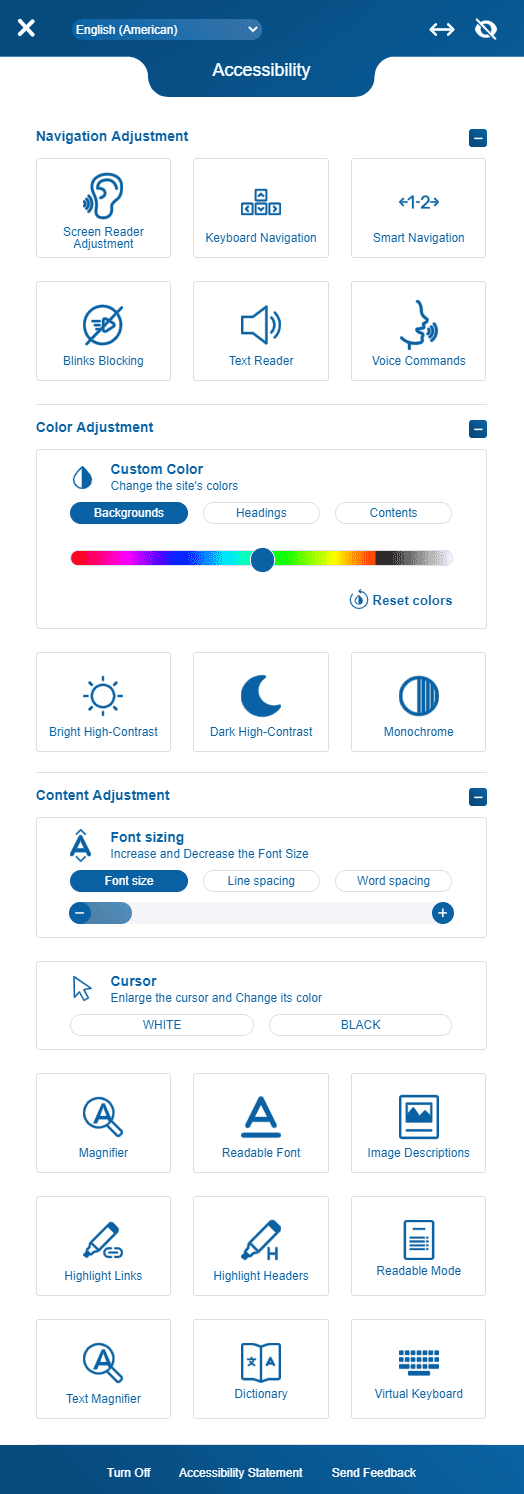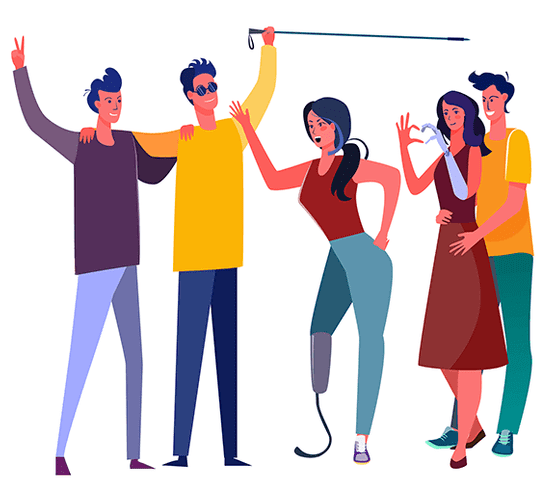All other businesses currently fall under the Human Rights Act, which stipulates any person deserves access to public venues, and all websites are public. So even if you're a sole proprietor in the service sector, you can easily get sued.
Ensure Your Website Meets ADA Compliance Standards.
WCAG 2.1, ADA, Section 508 and EN 301549 compliance
Full compliance - guaranteed ADA certificate & year round protection
1 easy step – just insert one-line-of-code and we will do the rest
Become Disability friendly - open your website for everyone
It's the law - protect yourself from lawsuits
Avoid $75K-$150K in fines
Ensuring your website meets ADA compliance is a legal requirement. Check out this brief explainer video:
Supreme Court Rules ADA
Protections Apply to Websites
Following the ruling by the U.S. Ninth Circuit Court of Appeals, which asserts that the ADA encompasses access not only to physical restaurants and stores but also to the websites and applications of those establishments, web accessibility has become a necessity rather than an option. If your website is not currently accessible—ensuring that individuals with disabilities related to hearing, mobility, vision, and cognitive function can utilize it—prioritizing accessibility is crucial for your digital strategy in 2024.


If your business falls under the physical ADA law such as stores, restaurants, hotels, movie theaters, museums, and doctor’s offices, etc, it now falls under the website accessibility law as an extension of the business.

All businesses with 15 and more employees!
How are we helping?
Achieve accessibility compliance with the fastest and most economical solution at your disposal!
Text Reader
The text reader is an integrated feature that vocalizes the written content found in documents. It caters to individuals who struggle with reading or those experiencing Attention Deficit Disorder (ADD). Users have the ability to manage the reading pace using either the mouse or keyboard, modify the speed of reading, and alter the sound pitch.
Keyboard Navigation
Numerous users with motor disabilities struggle to operate a mouse, while those who are blind or visually impaired often rely on keyboard navigation. The Keyboard Navigation feature complies with WCAG 2.0 standards, ensuring complete accessibility that allows users to navigate pages using only the keyboard.
Blinks Blocking
This tool is designed for individuals who are prone to seizures triggered by strobing, flickering, or flashing effects, as well as those with learning disabilities. The Blinks Blocking tool removes any graphics, news tickers, marquees, galleries, auto-play, and other animations that could be distracting or potentially induce a photo-epileptic seizure.
Monochrome, Dark High Contrast, Bright High Contrast
In accordance with the WCAG 2.0 guidelines, this tool offers three distinct contrast display options that allow users to modify the text and background colors, ensuring better readability for individuals with visual impairments.
Accessibility Toolbar Additional Functions:
This toolset provides users with low visual impairments the ability to adjust text size by increasing or decreasing it, as well as the option to choose a straightforward, easily-readable font, ensuring that readability and functionality are maintained.
Image Descriptions
Images and graphics enhance the comprehension of surrounding content. According to WCAG 2.0, all non-text content must include a text alternative that conveys an equivalent message to the image. The image description tool adheres to section 1.4.5 of the WCAG Success criterion, ensuring that image information is prominently displayed and that the intended concept or meaning of the image is clearly communicated to users. Additional features designed to enhance usability for users with low vision include a large white cursor, a large black cursor, and highlighting for links and headers.
This collection of accessibility tools, conveniently bundled into a single easy-to-install widget, satisfies the "Triple-A" conformance level outlined by the WCAG 2.0 guidelines.

"Expand your potential user base. 71% of web users with disabilities will abandon a website that is not accessible to them."

According to a report from the U.S. Census Bureau, there are 51 million individuals in the US aged 15 and older living with a disability:
- Of these, 19.9 million experience difficulty lifting or grasping objects, which affects their ability to use a mouse or keyboard; and
- 8.1 million have visual disabilities; many of them may depend on screen magnifiers or screen readers, while others may experience forms of color blindness.
- Additionally, the Census Bureau indicates that 7.6 million have hearing disabilities; they often rely on transcripts and/or captions for audio and video content.
By ensuring that digital content is accessible, your organization can expand its reach to more customers, enhance overall customer satisfaction, and secure a competitive advantage over those lacking accessibility features.
Contact us today to get started for free!
Make your site accessible for people who need it, increase the amount of potential buyers, and avoid expensive lawsuits!
Contact Us
We will get back to you as soon as possible.
Please try again later.






